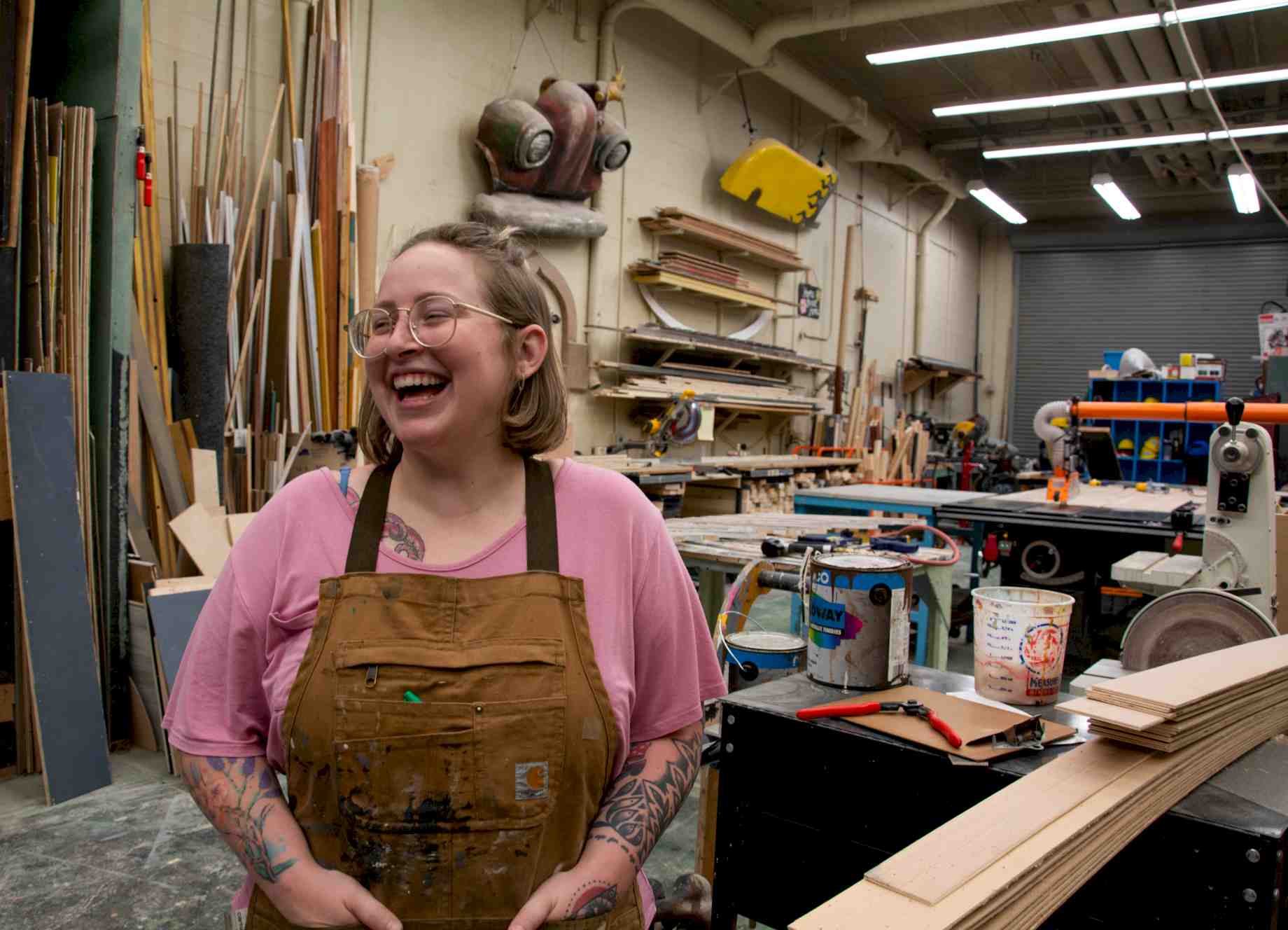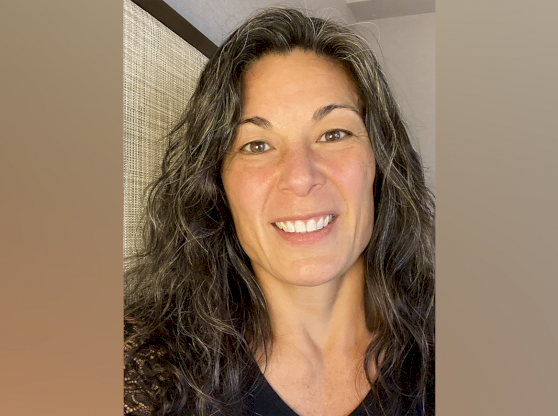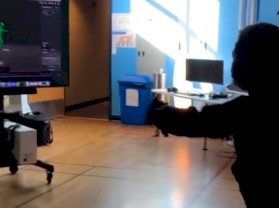Samantha Lewis, a third-year MFA Scenic Design student, challenged herself to use only recyclable materials when creating her set for this summer’s production of Hills on Fire.
“Something about big shows that’s hard for me is how wasteful we can be,” Lewis said. “I kept thinking about it and was like, can we do something where we don’t have to throw anything away except maybe some screws?”
As part of the School of Theatre + Dance’s summer partnership with New York-based company Tilted Windmills Theatricals, Hills on Fire is a unique experience for theatre students because they collaborated with the writers during the rehearsal process to develop the musical’s script.
When Lewis began designing for the stage in the Black Box Theatre in April, she had only a synopsis, a handful of scenes, and some songs to inspire her designs. Because she was working on the world premiere of the show, she couldn’t look to previous productions for inspiration.
“It was spot-on creation,” Lewis said. “I know the actors are probably shaking in their socks that they have to learn five new songs the week before opening, but I love it.”
Lewis started by visiting Repurpose Project, a non-profit thrift store that aims to prevent reusable items from ending up in the landfill.
“I go there to get inspired for pretty much all of my shows,” Lewis said. “There’s just textures and stories and life.”
She focused on finding items that could be used for future shows, such as a pile of screen windows that she stumbled upon. She also reused items from the scenic workshop that normally don’t make an appearance on stage, like apple boxes and step-stools that she transformed with paint. Lewis also paid attention to the building process, ensuring that none of the materials would be damaged by her work. In the end, her set, save for some screws and fabric, is entirely recyclable.
“All of my trash from this show could fit in a normal-sized trash can,” she said. “Usually, we have to get two whole dumpsters.”
Hills on Fire examines the opioid crisis and its effect on families. One of Lewis’s goals for her design was to help the audience empathize with the characters and the real-world issues they represent.
“I wanted people to understand the lengths that people will go to when you’re put in a situation, you know?” Lewis said. “As humans, we’re always judging, which is our nature, but we need to think about it. Think why you feel that way about that person.”
Lewis described the shock she experienced when she found piles of empty pill bottles at Repurpose Project. She decided to use them for Hills on Fire to show the audience the painful reality of addiction.
“Imagery is a great tool for art,” she said. “This show is about a problem that our society doesn’t like to talk about. Imagery can be a way to bring out those feelings that we have about it.”
As she approaches her final year in the scenic design program, Lewis is thinking about the legacy she wants to leave behind. She hopes that her work will encourage other designers to pursue sustainable options for creating their art.
“I want people to be inspired by it and see that you can create beautiful work out of garbage,” Lewis said. “I’m teaching scenic design in the fall and I’m going to challenge them all semester to use recycled materials instead of styrofoam.”
Her work is already having an impact.
“Peta McKenna, the designer for next fall’s musical, is using the same concept of using what we have instead of buying a bunch of new stuff,” Lewis said. “I think it’s cool that these two big shows are going to be practically made out of what we found in our basement.”
Lewis emphasized that her set isn’t the finished product but just one part of the interplay between lighting, costumes and actors.
“I helped make something that’s going to make people cry and laugh and scream and clap,” she said. “I got to be a part of that.”
Though Lewis feels proud when she sees actors performing on the stage she built, she is always eager to tear it all down and begin her next project with a blank slate.
“You have to remember that it’s temporary,” she said. “This is just one step in creating more and more art for the world.”




